ML Aggarwal Class 8 Solutions for ICSE Maths Chapter 1 Rational Numbers Ex 1.2
Question 1.
Subtract:
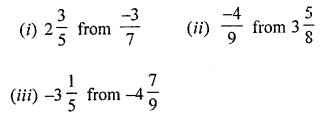
Solution:
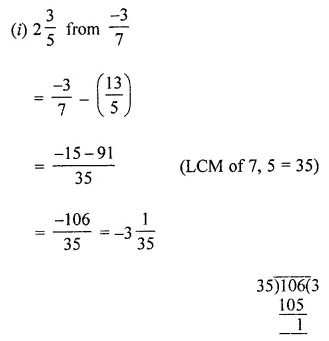
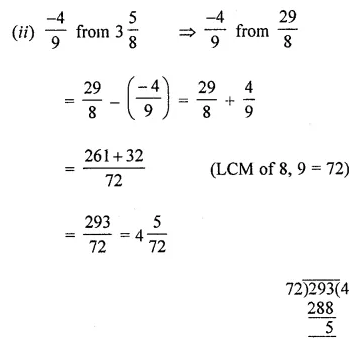
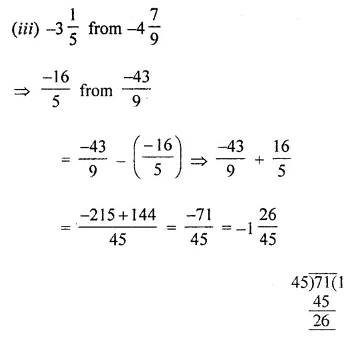
Question 2.
Sum of two rational numbers is \(\frac { 3 }{ 5 }\). If one of them is \(\frac { -2 }{ 7 }\), find the other.
Solution:
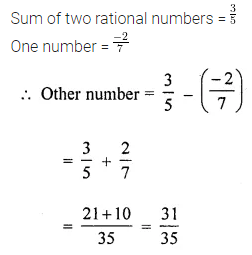
Question 3.
What rational number should be added to \(\frac { -5 }{ 11 }\) to get \(\frac { -7 }{ 8 }\)?
Solution:
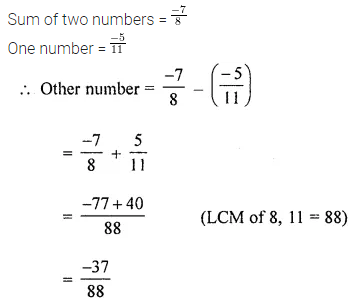
Question 4.
What rational number should be subtracted from -4\(\frac { 3 }{ 5 }\) to get -3\(\frac { 1 }{ 2 }\) ?
Solution:
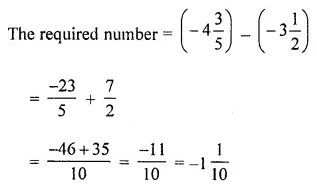
Question 5.
Subtract the sum of \(\frac { -5 }{ 7 }\) and \(\frac { -8 }{ 3 }\) from the sum of \(\frac { 5 }{ 2 }\) and \(\frac { -11 }{ 12 }\).
Solution:
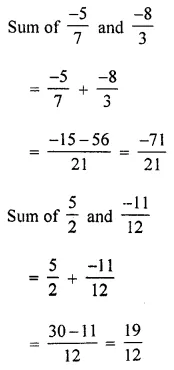
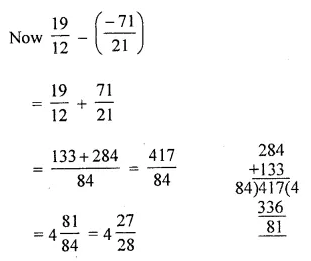
Question 6.
If x = \(\frac { -4 }{ 7 }\) and y = \(\frac { 2 }{ 5 }\), then verify that x – y ≠ y – x.
Solution:
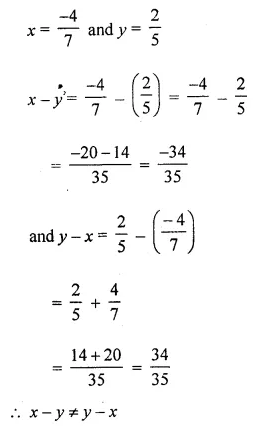
Question 7.
If x = \(\frac { 4 }{ 9 }\), y = \(\frac { -7 }{ 12 }\) and z = \(\frac { -2 }{ 3 }\), then verify that x – (y – z) ≠ (x – y) – z
Solution:
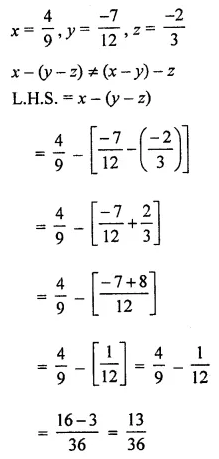
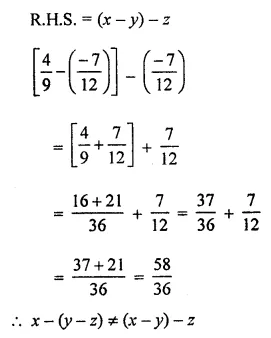
Question 8.
Which of the following statement is true/fasle?
(i) \(\frac { 2 }{ 3 } -\frac { 4 }{ 5 }\) is not a rational number.
(ii) \(\frac { -5 }{ 7 }\) is the additive inverse of \(\frac { 5 }{ 7 }\).
(iii) 0 is the additive inverse of its own.
(iv) Commutative property holds for subtraction of rational numbers.
(v) Associative property does not hold for subtraction of rational numbers.
(vi) 0 is the identity element for subtraction of rational numbers.
Solution:
